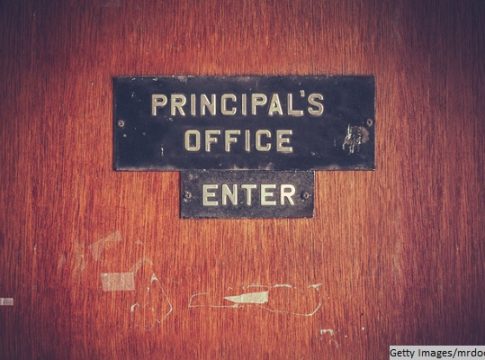A major development of recent years has been the explosive growth of online learning in K–12 education. Sometimes it takes the form of “blended learning,” with students receiving a mix of online and face-to-face instruction. Students may also learn via web-based resources like the Khan Academy, or by enrolling in distance-learning “independent study” courses. In addition, an increasing number of pupils are taking the plunge into fully online schools: In 2015, an estimated 275,000 students enrolled in full-time virtual charter schools across twenty-five states.
The Internet has obviously opened a new frontier of instructional possibilities. Much less certain is whether such opportunities are actually improving achievement, especially for the types of students who enroll in virtual schools. In Enrollment and Achievement in Ohio’s Virtual Charter Schools, we at Fordham examined this issue using data from our home state of Ohio, where online charter schools (“e-schools”) are a rapidly growing segment of K–12 education. Today they enroll more than thirty-five thousand students, one of the country’s largest populations of full-time online students. Ohio e-school enrollment has grown 60 percent over the last four years, a rate greater than any other type of public school. But even since they launched, e-schools have received negative press for their poor academic performance, high attrition rates, and questionable capacity to educate the types of students who choose them. It’s clearly a sector that needs attention.
Our study focuses on the demographics, course-taking patterns, and academic results of pupils attending Ohio’s e-schools. It was authored by Dr. June Ahn, an associate professor at New York University’s Steinhardt School of Culture, Education, and Human Development. He’s an expert in how technology can enhance how education is delivered and how students learn.
Using student-level data from 2009–10 through 2012–13, Dr. Ahn reports that e-schools serve a unique population. Compared to students in brick-and-mortar district schools, e-school students are initially lower-achieving (and more likely to have repeated the prior grade), more likely to participate in the federal free and reduced-price lunch program, and less likely to participate in gifted education. (Brick-and-mortar charters attract even lower-performing students.)
The analysis also finds that, controlling for demographics and prior achievement, e-school students perform worse than students who attend brick-and-mortar district schools. Put another way, on average, Ohio’s e-school students start the school year academically behind and lose even more ground (relative to their peers) during the year. That finding corroborates the disappointing results from Stanford University’s Center for Research on Education Outcomes (CREDO) 2015 analysis of virtual charter schools nationwide, which used a slightly different analytical approach.
Importantly, this study considers e-school students separately from those in other charters. It finds that brick-and-mortar charter students in grades 4–8 outperform their peers in district schools in both reading and math. In high school, brick-and-mortar charter students perform better in science, no better or worse in math, and slightly worse in reading and writing compared to students in district schools. This confirms what some Ohioans have long suspected: E-schools weigh down the overall impact of the Buckeye State’s charter sector. Separate out the e-school results and Ohio’s brick-and-mortar charters look a lot better than when the entire sector is treated as a whole.
The consistent, negative findings for e-school students are troubling, to say the least. One obvious remedy is to pull the plug—literally and figuratively—but we think that would be a mistake. Surely it’s possible, especially as technology and online pedagogy improve, to create virtual schools that serve students well. The challenge now is to boost outcomes for online learners, not to eliminate the online option. We therefore offer three recommendations for policy makers and advocates in states that, like Ohio, are wrestling to turn the rapid development of online schools into a net plus for their pupils.
First, policy makers should adopt performance-based funding for e-schools. When students complete courses successfully and demonstrate that they have mastered the expected competencies, e-schools would get paid. This creates incentives for e-schools to focus on what matters most—academic progress—while tempering their appetite for enrollment growth and the dollars tied to it. It would also encourage them to recruit students likely to succeed in an online environment—a form of “cream-skimming” that is not only defensible but, in this case, preferable. At the very least, proficiency-based funding is one way for e-schools to demonstrate that they are successfully delivering the promised instruction to students. That should be appealing to them given the difficulty in defining, tracking, and reporting “attendance” and “class time” at an online school.
Second, policy makers should seek ways to improve the fit between students and e-schools. Based on the demographics we report, it seems that students selecting Ohio’s e-schools may be those least likely to succeed in a school format that requires independent learning, self-motivation, and self-regulation. Lawmakers could explore rules that exempt e-schools from policies requiring all charters, virtual ones included, to accept every student who applies and instead allow e-schools to operate more like magnet schools with admissions procedures and priorities. E-schools would be able to admit students best situated to take advantage of the unique elements of virtual schooling: flexible hours and pacing, a safe and familiar location for learning, a chance for individuals with social or behavioral problems to focus on academics, greater engagement from students who are able to choose electives based on their own interests, and the chance to develop high-level virtual communication skills. E-schools should also consider targeting certain students through advertising and outreach, especially if they can’t be selective. At the very least, states with fully online schools should adopt a policy like the one in Ohio, which requires such schools to offer an orientation course—the perfect occasion to set high expectations for students as they enter and let them know what would help them thrive in an online learning environment (e.g., a quiet place to study, a dedicated amount of time to devote to academics).
Third, policy makers should support online course choice (also called “course access”), so that students interested in web-based learning can avail themselves of online options without enrolling full-time. Ohio currently confronts students with a daunting decision: either transfer to a full-time e-school or stay in their traditional school and potentially be denied the chance to take tuition-free, credit-bearing virtual courses aligned to state standards. Instead of forcing an all-or-nothing choice, policy makers should ensure that a menu of course options is available to students, including courses delivered online. To safeguard quality and public dollars, policy makers should also create oversight to vet online options (and veto shoddy or questionable ones). Financing arrangements may need to change, too, perhaps in ways that more directly link funding to actual course providers. If it were done right, however, course choice would not only open more possibilities for students, but also ratchet up the competition that online schools face—and perhaps compel them to improve the quality of their own services.
Innovation is usually an iterative process. Many of us remember the earliest personal computers—splendid products for playing Oregon Trail, but now artifacts of the past. Fortunately, innovators and engineers kept pushing the envelope for faster, nimbler, smarter devices. Today, we are blessed as customers with easy-to-use laptops, tablets, and more. But proximity to technology, no matter how advanced, isn’t enough. E-schools and their kin should facilitate understanding of how best to utilize online curricula and non-traditional learning environments, especially for underserved learners. From this evidence base, providers should then be held to high standards of practice. Though the age of online learning has dawned, there is much room for improvement in online schooling—and nowhere more than in Ohio. For advocates of online learning, and educational choice, the work has just begun.
—Dara Zeehandelaar and Mike Petrilli
This post originally appeared on Flypaper





